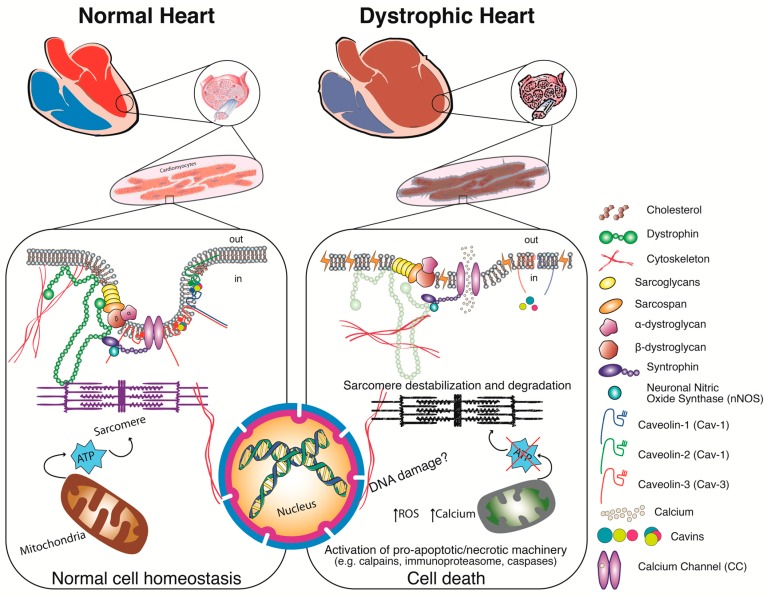Figure 2.
MD-CM pathological signalling mechanisms. A schematic depicting the pathological signalling resulting from mutations in the dystrophin gene. Muscular dystrophy mutations cause dystrophin protein deficiency ranging from no expression to the generation of semi-functional truncated isoforms which result in clinically severe (e.g., Duchenne) or milder (e.g., Becker) forms of muscular dystrophies respectively. Downstream effects of altered dystrophin protein are: over activation of ion channels and rises in intracellular ion concentrations e.g., calcium; fragile sarcolemmal membranes which are subject to rupture due to sustained myocyte contraction resulting in sarcolemal micro-ruptures (yellow strikes) through which cytosolic components leak out. Further downstream signalling can be instigated such as: disturbed sarcolemmal lipid and protein content/arrangement, mitochondrial dysfunction, pro-inflammatory cytokine production, and activation of several enzymes which participate in the degradation of cellular components that pass through membrane micro ruptures, finally culminating in the activation of terminal cell death pathways.

